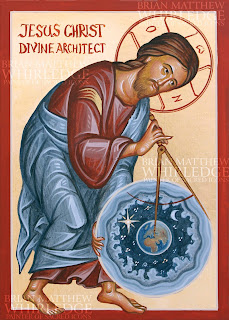An Inspiring Day in Rome
Today was another full and inspiring day. I woke early to catch a taxi to Santa Maria Maggiore. I basked in the 5th century mosaics (AD 432-440), depicting 27 stories from the Old Testament. The magnificent triumphal arch is also from the fifth century. Here is a thorough catalog of the mosaics. This church also houses wood from the Lord’s Manger. It was such a blessing to venerate this sacred relic.
The crown jewel of Santa Maria Maggiore is the wonderworking icon of the Theotokos “Salus Populi Romani” (Salvation of the People of Rome). The icon is ascribed to Saint Luke. The current overpainting dates from the 6th century. She arrived in Rome from Crete in the year 590, and has been treasured ever since. She was cleaned and restored by the Vatican Museum in just 2018, and she is stunning. She is in perfect condition, quite a marvel considering her age. I’ve long admired the beauty of this icon, and was so blessed to spend 20 minutes praying and sketching until I was kicked out for sextons to clean the chapel. I stood outside the gates and continued to sketch. The cleaning finished in 10 minutes, and I returned to finish the sketch. I could’ve spent all day here with the icon and all the mosaics, but I had a lot on my agenda.
After Santa Pudenziana, I was honored to get coffee with the esteemed iconographer Ivan Polverari. I’ve admired his masterful work for years, and we’ve connected and corresponded online for much of that time. Our time together today was so inspiring. He seeks to work in an authentic Roman style within the language of iconography rather than copying existing icons, East or West. His work references local Roman iconography, such as the frescoes I mentioned in Sant’Angelo in Formis and Santa Maria Antiqua. “Copying kills art,” he said, referring to the common approach of copying styles and icons of the past. He gave me great compliments and helpful critique of some of my recent work.
He asked if I had been to San Saba, which wasn’t even on my radar. “Come,” he said. “Let’s go. It’s only 300 meters from here.” We left the cafe and walked together, continuing our discussion. “We are leaving modernity and entering the medieval world,” he said as we entered the courtyard of San Saba. Saint Maximus the Confessor lived here. This church contains the relics of Saint Saba, who founded a great monastery in the Palestinian desert near Bethlehem. This wonderful church contains not only magnificent medieval frescoes, but some rare and precious gems.
There are 7th century frescoes by the same hand as Santa Maria Antiqua! We studied the master’s handiwork. The linework is exquisite, the brushstrokes are bold, daring, and fast. The color is masterful, often using only 3 or 4 colors in a single composition. “If I can ever paint like this, I’ll die a happy man,” Ivan said.
Ivan’s words perfectly captured the sentiments I couldn’t quite put into words: “You have seen Santa Maria Antiqua. You have seen the hands of the master. You are forever changed. You will never paint the same way again.”
After we parted ways, I returned to the Forum to purchase the book on Santa Maria Antiqua. After a wild goose chase among different bookstores, the booksellers determined the only bookstore that had the book was in the Colosseum. I sweet talked my way into the secret employee entrance to get to the bookstore to buy it. The exit of the Colosseum spit me out near the Chapel of Saint Sylvester within the Augustinian Convent Santi Quattro Coronati, which was closed yesterday. I was able to spend about 15 minutes among the beautiful 13th century frescoes before a nun told me the chapel was closing and I had to leave.
I rode a taxi back to Trastevere, where I made a brief visit to the magnificent basilica Santa Maria Trastevere. It contains significant mosaics and an ancient 6th century encaustic icon of the Mother of God, who this church is named for. After a delicious lunch of pasta, we caught a train to Ravenna, where our adventure continues.























Comments
Post a Comment